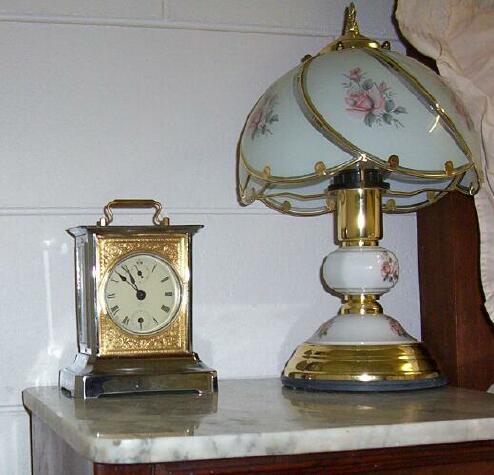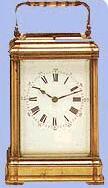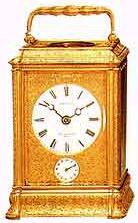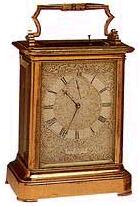


Carriage Clocks
Few people today would think of packing a carriage
clock when they go on a journey, yet this is what they were designed
for.
They usually have brass cases with handles and many originally
came with a leather travelling case.
They're among the least expensive types of antique clocks available.
You can buy less elaborate models for about £300 to £600,
although quality ones may cost more than £2,000.
French carriage clocks
While a few were made in England, nearly all carriage clocks were
made in France during the 19th and early 20th century.
Features to look for are
------white enamel dial
------black
numerals
------stamped
mark or signature on the backplate
------eight-day
duration
------spring-driven
movement with going barrel
------bevelled
glass panels
------blued
steel hands
Signs of quality
------engraved case
------panelled
cloisonné or porcelain case
------subsidiary
dials
Repeat buttons
Some carriage clocks have a repeat button on the top of the case:
when the button is pressed the clock repeats the last hour struck.

Engraved cases
Engraved-case carriages are more valuable than plain ones.
Look for elaborate, detailed decoration which covers as much of
the case as possible.

Makers
Look out for clocks made by
------Auguste
(French), active from 1840
------Abraham-Louis
Breguet (French), 1747 to 1823
------Achille
and Louis Brocot (French), active 19th century
------Dejardin
(French), active 19th century
------Pierre
and Alfred Drocourt (French), 1860 to 1889
------Frodsham
family (English), 19th to 20th century
------Paul
Garnier (French), 1801 to 1869
------Japy
(French), 1772 to early 20th century
------FA
Margaine (French), c.1870 to 1912
------E
Maurice (French), active 1880s
------James
McCabe (English), 19th century
------Soldano
(French), c.1855 to 1880
Subsidiary dials
Clocks with subsidiary dials are especially desirable.
Some clocks also have dials showing seconds or the days of the
week.
